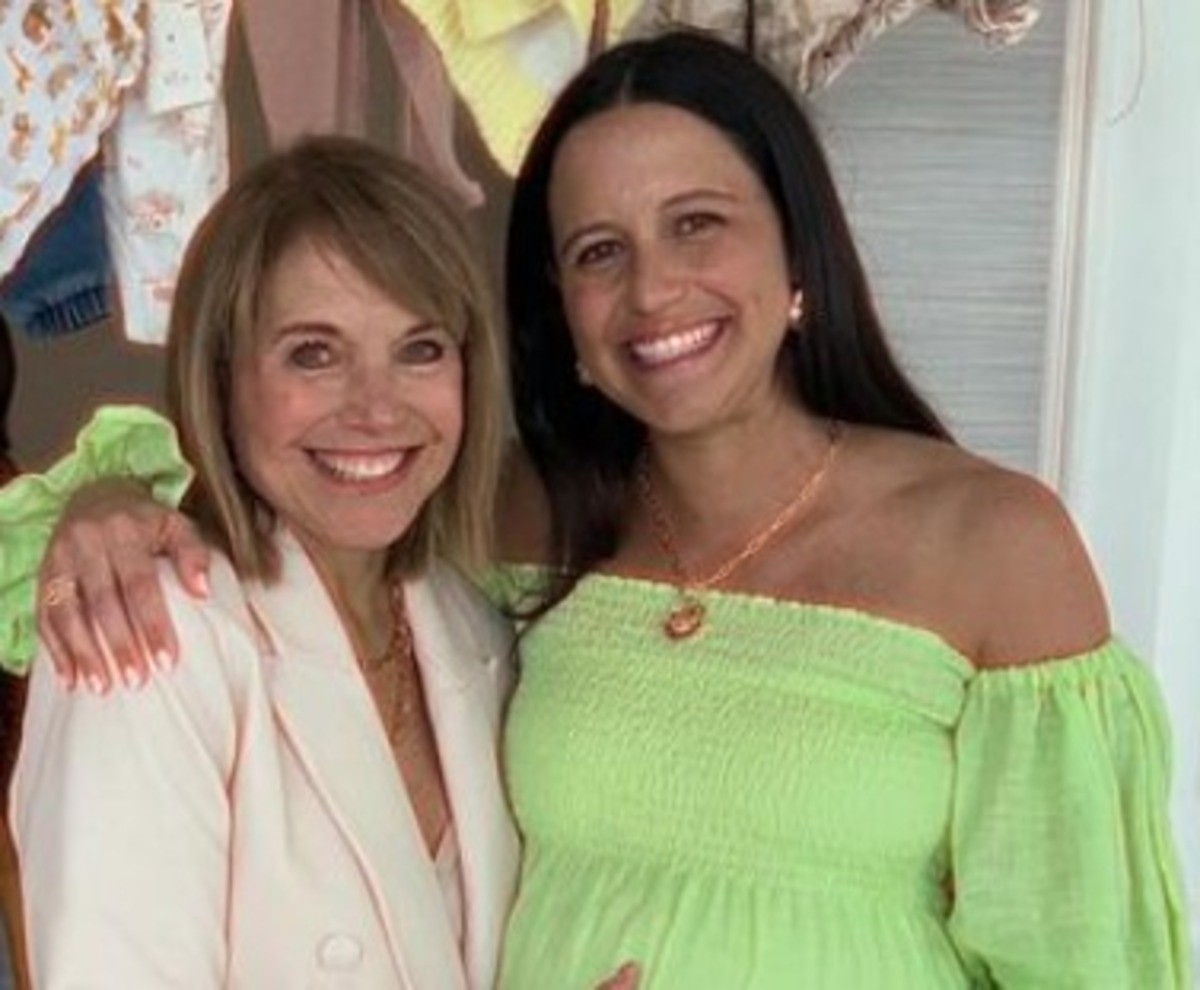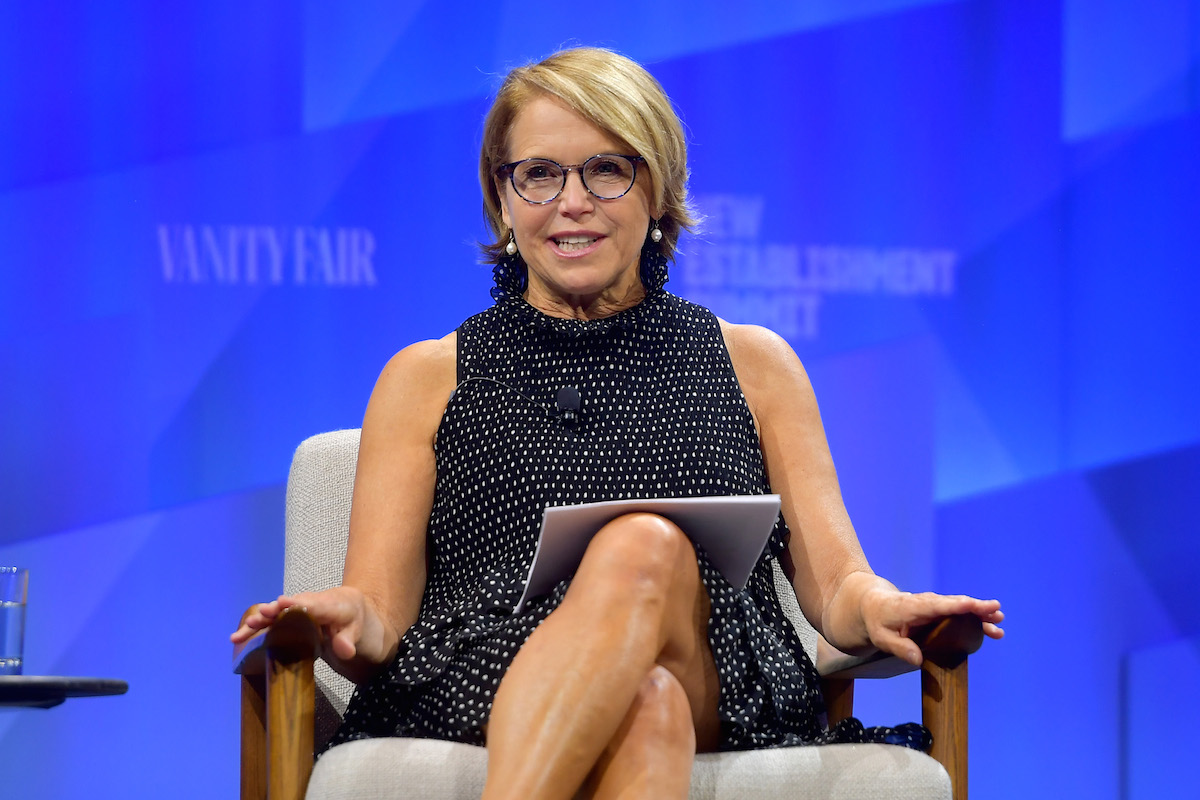Marking Milestones After Cancer
- Journalist Katie Couric, 67, excitedly welcomed the birth of her first grandchild, John Albert Dobrosky. Couric’s daughter Ellie is now a mom, making the milestone moment possible. Couric is ready to be known as “Gogo” to her beautiful grandson.
- Many cherish the birth of a grandchild. However, for cancer survivors like Couric, milestone moments like a new family addition tend to have more significant meaning.
- Reaching milestones during or after a cancer battle is a big deal. Milestones may include getting engaged, reaching another birthday, or the looming birth of a new baby. These moments tend to have added meaning after a diagnosis compared to before because patients tend to have an added sense of gratitude.
- Couric was diagnosed with early-stage breast cancer in 2022. She bravely shared her diagnosis with millions watching the “Today Show” segment. Since her diagnosis, she’s been a staunch advocate for cancer early detection, especially for breast and colon cancer.
Katie Couric, 67, garnered many titles throughout her illustrious career, including award-winning journalist and breast cancer survivor. Yet, none perhaps carry as much significance as her newest: Grandma. Brimming with joy, Couric excitedly welcomes her daughter’s beautiful baby boy.
“Mom and Dad (Ellie and Mark) are over the moon. I am thrilled to have my first grandchild,” Couric said in an Instagram post.
Read MoreView this post on Instagram
Couric’s social media posts show her daughter Ellie, her baby John Albert Dobrosky, and her dad Mark.
“We feel so blessed,” Couric said.
Couric has been ecstatic about the birth of her first grandchild. The family chose to keep the birth a surprise and find out after the baby was born. An Instagram commenter asked Couric what she wanted her grandson to call her. Couric replied, “Check out my sweater,” which reads, “Gogo.”
As stated, the birth of a child is a remarkable moment to be cherished. However, milestone moments have added meaning for cancer patients like Couric because cancer often teaches patients gratitude.

Photo: Instagram/Katie Couric
According to Cancer.net, patients and their support groups filled with loved ones may engage in some activities to help recognize and celebrate memorable milestones. These activities include planning a nice dinner or party-like gathering and spending time donating money or volunteering to a cancer charity. Perhaps the way you memorialize your cancer milestone could be independent of others. Examples include a solitary walk-in nature and allowing your senses to take hold while you reflect.
Helping Patients Better Understand Dense Breasts
- I Have Dense Breasts. Do I Need a 3D Mammogram?
- Millions of Women With Dense Breasts — A New Congressional Law — What You Need to Know
- When You’re Getting a Mammogram, Ask About Dense Breasts
- How to Avoid False Positive Cancer Results in Women With Dense Breasts: Ultrasounds Used in Addition To Mammograms
Advocating for Cancer Patients
Couric shared her breast cancer diagnosis with the world when she was diagnosed in 2022. During a taping of the “Today” show, she revealed her early-stage breast cancer diagnosis.
“I was nervous about it. I waited a few days so I could process it and really understand what we were dealing with,” Couric said to “Today” at the time.

Dr. Michael Zeidman, assistant professor of surgery at Icahn School of Medicine at Mount Sinai in New York City, tells SurvivorNet that stage 1 is divided into two subcategories, 1a and 1b. Stage 1a breast cancer means the cancer hasn’t spread outside the breast. Stage 1b means there’s no tumor in the breast; instead, small groups of cancer cells are found in the lymph nodes. Stage 1b can also mean there’s a tumor in the breast and small groups of cancer cells in the lymph nodes. Stage 1 also means the cancer was caught very early, he says.
She underwent surgery and radiation therapy to treat the cancer a few months after her diagnosis.
Since her own cancer experience fueled her, Couric has led a crusade of cancer advocacy with an added focus on early detection. She often promotes breast cancer screening and colon cancer screening.
“People must roll their eyes and say, ‘Oh, there she goes, again, from colons to boobs,” Couric told USA Today reports.
“I feel like I have an obligation. That I have an audience; they’ve watched me for a long time,” Couric said, expressing her desire to push cancer screenings and early detection.
Couric got a colonoscopy during an episode of the “Today Show.” She says she chose to get such a sensitive procedure publicly to “destigmatize the procedure” and take people through it.
“This is one cancer that can actually be stopped in its tracks if it’s detected early,” Couric says, referring to colon cancer. This type of cancer carries added weight for the veteran journalist because her former husband died from the disease at 42 years old.
WATCH: How enhanced mammograms help women with dense breasts.
Couric’s push for more women to stay on top of mammograms includes enhanced mammography screening. This type of mammogram screening was beneficial to her because she has dense breasts, meaning she has more fibroglandular tissue and less fatty breast tissue.
More Resources for Women with Dense Breast
Breast cancer screening methods all aim to look for lumps in the breast and signs of cancer. The medical community has a consensus that women between 45 and 54 have annual mammograms. However, an independent panel of experts called the U.S. Preventive Services Task Force (USPSTF) is saying that women should start getting mammograms every other year at the age of 40, suggesting that this lowered the age for breast cancer screening could save 19% more lives.
Dr. Jeannie Shen, medical director of the Breast Program at Huntington Hospital, an affiliate of Cedars-Sinai, told SurvivorNet that she agrees with starting mammogram screenings for women with an average breast cancer risk at age 40.
The new recommendations apply to women with an average risk of breast cancer, including people with a family history of the disease and risk factors like dense breasts. Dense breasts mean you have more fibroglandular tissue and less fatty tissue in your breasts. The density can make detecting cancer more difficult for a routine mammogram. To screen dense breasts more closely, a 3D mammogram is often used, which looks at the breast tissue in several layers.
“With digital mammography and 3D tomosynthesis, we’re taking thin slices through the breast tissue, like slices of a loaf of bread,” Dr. Connie Lehman, the Chief of the Breast Imaging Division at Massachusetts General Hospital, tells SurvivorNet.
However, she disagrees that screening occurs every other year between 40 and 50, when “interval cancers (cancers which develop between screening mammograms) are more common.”
The American Cancer Society recommends getting a mammogram every other year for women 55 and older. However, women in this age group who want added reassurance can still get annual mammograms.
Learn more about SurvivorNet's rigorous medical review process.

